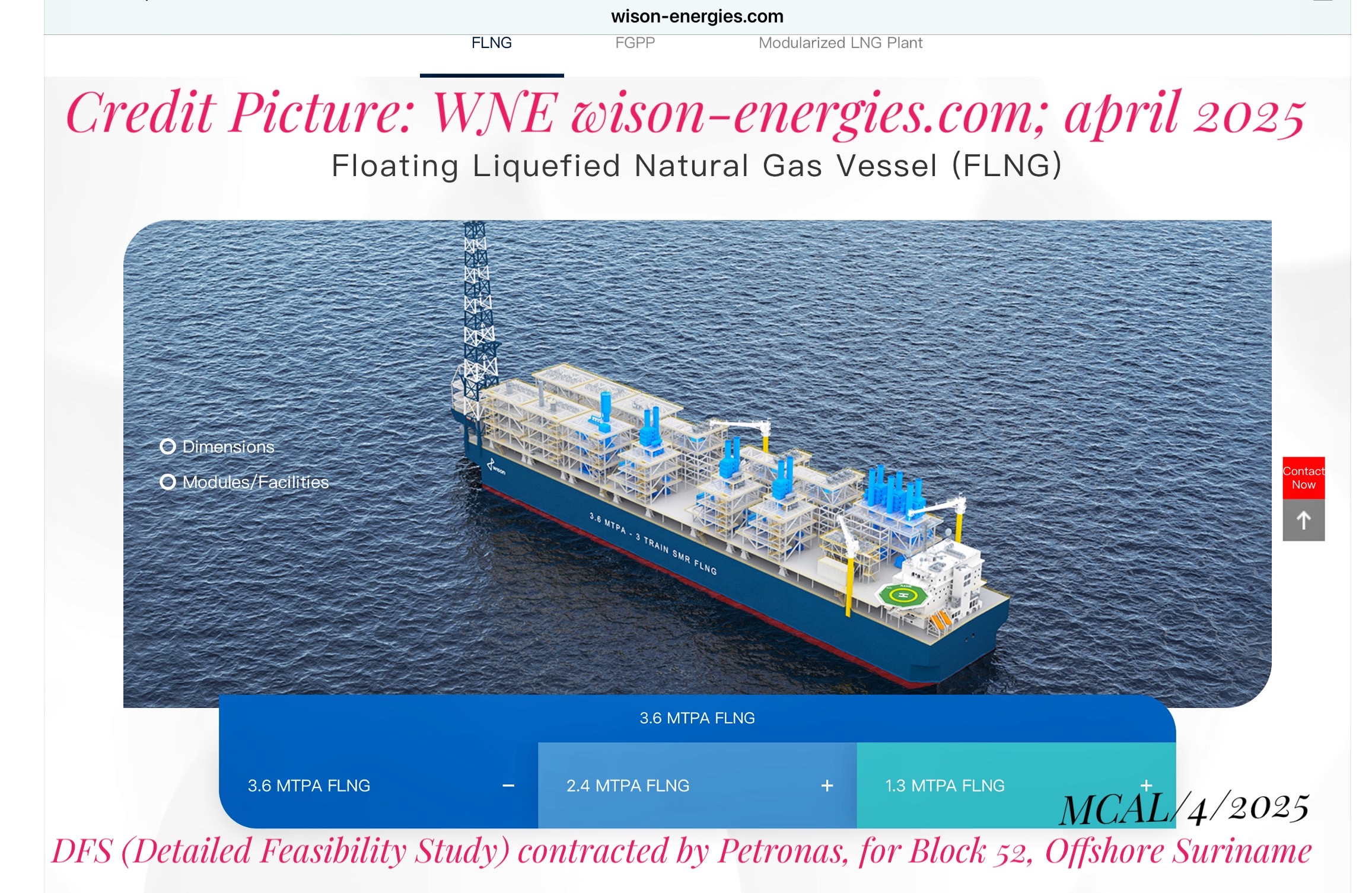#Suriname #Offshore #Petronas #FLNG #Block52 #GoldenLane #Gas
FLNG in Malaysia: Monetizing Domestic Gas Reserves
PETRONAS operates two pioneering Floating Liquefied Natural Gas (FLNG) units in Malaysian waters: PFLNG Satu and PFLNG Dua, both designed to commercialize stranded gas fields that are otherwise challenging to develop.
- PFLNG Satu:
Deployed at the Kanowit gas field, approximately 180 km offshore Sarawak. While exact reserves are not publicly disclosed, the field is part of Malaysia’s broader and well-established natural gas reserves. - PFLNG Dua:
Operating at the Rotan gas field in Block H, about 140 km offshore Kota Kinabalu, Sabah. The field lies in water depths of up to 1,500 meters and holds approximately 9.88 billion cubic meters (bcm) of recoverable natural gas.
Exploration in Suriname: Unlocking the Potential of Block 52
PETRONAS, in partnership with ExxonMobil and Staatsolie, is actively exploring Block 52 offshore Suriname. Recent drilling has yielded promising results:
- Fusaea-1 Discovery:
Encountered several oil and gas-bearing sandstone intervals. Current estimates suggest that discoveries in Block 52 could collectively amount to up to 500 million barrels of oil equivalent (boe).
Comparative Analysis: Malaysia vs Suriname
- Reserve Scale:
Block 52’s estimated 500 million boe is significant, particularly in the context of Suriname’s emerging offshore sector. However, it remains modest compared to the volumes developed by PETRONAS’s FLNG assets in Malaysia. - Project Maturity:
Malaysia’s FLNG units are fully operational, exporting LNG to global markets. Block 52, by contrast, is still in the exploration and appraisal phase, with commercial viability hinging on further discoveries.
Strategic Outlook: What’s Next for Block 52?
To advance Block 52 toward commercial development, PETRONAS will drill three additional wells in 2025. These wells are critical for confirming sufficient gas volumes that justify infrastructure investments—possibly including floating LNG production similar to Malaysia’s model.
A successful appraisal campaign could elevate Block 52’s profile and unlock its potential as Suriname’s first major gas-producing hub—allowing it to “fly high and free.”
A Surinamese Sidebar: Nature Meets Energy
Have you ever seen the vibrant Surinamese Ara birds (Psittacidae family) in the wild—perhaps in the jungles near Arapahu? It’s a breathtaking experience: dense, emerald rainforest, untouched and thriving, a true “Amazon-type” adventure.
If you’re in Suriname, make time to visit. It’s bucket-list worthy.
Conclusion: A Tale of Two Strategies
PETRONAS’s gas operations in Malaysia are already making substantial contributions to global LNG supply through FLNG. Meanwhile, its investments in Suriname reflect a strategic bet on an emerging frontier.
Block 52’s commercial success depends on confirming additional reserves, making the 2025 drilling campaign essential. If successful, it could mark the start of Suriname’s gas export era—adding a new chapter to the global LNG landscape.
Photo credit: Pixabay (free use)
Sources: PETRONAS press releases, industry news reports, and geological publications. Readers are encouraged to consult Staatsolie’s and ExxonMobil’s recent disclosures for updated figures.
Would you like help creating a matching infographic or block diagram to visually support the comparison?



Leave a Reply